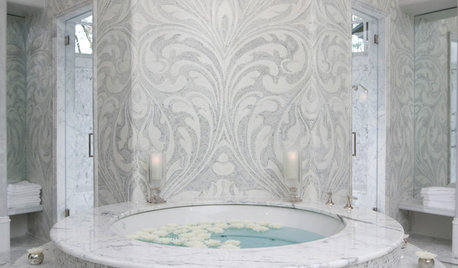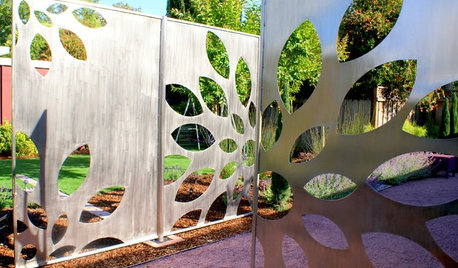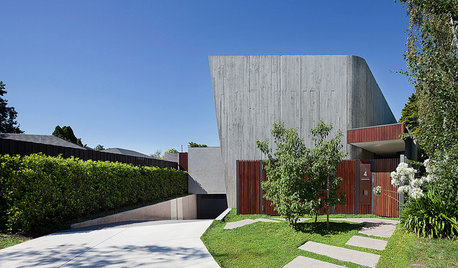I buried this on a thread about "brown water" but didn't get any replies this morning so I thought I'd make another topic. I've heard the term "polished water" and want to know if that's what I lack at the moment & what do I need to do to get my water clarity back. The long explanation is in my post below.
Okay, once I made my pond substantially larger last year I had the obligatory algae bloom and then Clear Clear water. That was until I had an early autumn here in the midwest and a maple tree filled my pond with leaves (prior to me netting the pond). Since that time I've only had tea-colored water (!!!), and it has confounded me! I've cleared the leaves from the pond long ago but I still have tea colored water, it is now almost June of the following year. The Professor has pointed out that a nearby mulched garden bed could be fouling my water. It's a long shot but maybe. I'm working on curing that now by introducing a larger rock-lined edge around the pond.
But I'm interested in some things that Sandy has said in another post about anerobic bacteria / die off of good bacteria / sulphur smell and lack of oxygen. It has made me think of this above posting by Watershaper talking about flocculent (sp)-- I think I know what this (flocculent) is but I'll have to do more research-- and activated carbon, as well as oxygenation.
My setup is a 2800 gal pond focusing on aquatic plants, I have about 8 large marginals, and 8 hardy water lilies. I have a large Savio skimmer and an Atlantic Bio-Falls. The plants in the bio-falls are starting to root now. The other plants are doing so-so; larger ones have gotten fertilized with Highland Rim tabs for the first time this spring ( I didn't do this last year), but smaller plants seem to struggle.
Of my overall 2800 gals most of this is in the lower pool, where I have the water lilies. The depth is about 34 inches with several shelves. I have a wide but short height falls between the upper and lower pools, only about six inches of falls by 40 inches wide (weir). The upper pool is approximately 200 gals. This is where I've put most of the marginals, the depth is only about 18 inches (deepest) with about 12" the norm. I have everything in pots in sandy-clay soil with pebbles or sand tops.
I have the bio-falls up stream from the upper pool and about a five foot quick descending stream between them. It is lined with rounded cobbles. I have been fighting string algae all winter and spring. Again, I've been fighting STRING ALGAE ALL WINTER & SPRING! While I've gotten a hold of it in the lower (larger) pool, the stuff is still forming anew in the upper pool around the plants and rocks of the stream... this is coming right off the bio-falls! I haven't been able to figure this out. Why would the water coming off the vegetative filtration be the most prone to develop the algae?! I'VE ADDED SOME HYDROGEN PEROXIDE TO THE MORE STILL WATERS AND IT SEEMS TO KILL THE ALGAE, AT LEAST IT CLUMPS AND I CAN SCOOP IT OUT IN A DAY OR TWO. But why would my bio-falls and stream bed coming off the falls be so prone to algae just when the vegetative filter is starting to really grow? This should be the exact opposite, should it not! :(
Next, I actually have two pumps in my Savio skimmer basin. One I have going to the Bio-Falls and the other I have going to a pipe with cut out holes that discharges just under the weir of the bio-falls to create a rapids effect. Both pumps are Laguna 3500 gph (I would estimate a 12 foot head, so they what, discharge about like a 2800 gph pump).
Okay, so that's the setup.
A few fish, 12 to 15. Mainly Fancy Goldfish of medium size, less than four inches. I test the water chemistry almost weekly.
Here it is, without fail:
pH: 8.5 ( I no longer try adjusting pH down )
KH: 9.25 degrees or 166ppm ( I buffer with Baking Soda as needed)
GH: 3 to 5 degrees
Nitrite: Nitrate: (hard to read the scale but no more than this) CO2: (not sure if the chart the Tetra Pond Test Kit gives is good for ponds because it says for aquariums on the CO2 sheet, but given the pH and KH it would be 0.8mg/lf
Water Temp.: fluctuating this spring between 64 F and 73 F. The above results were from yesterday (almost any day) at 73 F in the late afternoon.
So...
Okay, I've had the "rapids-creating pump" off for a few days just to save electricity dollars. But I turn it on today after a good 2 weeks off. I get a huge plum of fine muck like sediment discharged thru my rapids pipe and into my stream & upper pool and there is a very strong sulphur smell that lingers for about 4 or 5 minutes, it makes me think of Sandy's previous post about anerobic bacteria creating the smell and killing the beneficial bacteria. Would this account for why my bio-falls is not "eating-up" my excess nutrients that cause my string algae (occurring IN and close to the falls)???
I have a lot of fine sediment on the bottom of my pond. It is only about quarter of an inch deep sediment but it seems to be stirred-up quickly by any kind of movement. Is this causing my water to be tea-colored? It's so fine. If I move the net into the lily pool to remove string algae I get a cloud of fine, brown debris. I believe this is what my second pump, when I turned it on for the rapids, sucked up the pipe to the cloud and stink-up (sulphur) my stream bed.
So Watershaper says use a flocculent. I haven't goggled "flocculant" yet but I imagine it is something to bind particulate together. Okay. Might work. He also says add "activated carbon" which I believe is a form of charcoal. Where do you get this? I mean besides the pond store that sells it like gold?
What else am I missing?
Professor David?
Oh I know, I want to ask about Oxygen that's dispersed in the water. I believe the pond gets an oxygen boost from three sources in my pools. First I have the falls from the vegetative bio-filter, this is the Atlantic Bio-Falls; then I get oxygen (I think) from the rapids of the steep stream; then, I believe I get oxygen from the 6 inch falls located between the small upper pool and lily pond pool. My question is this: how does oxygen travel in a larger pool of water? If my lower pool is roughly 2400 gal. and all of the turbulence is on the west side, is the far east side of that lower pool being oxygentated? I wonder.
Sandy indicated that she cleared water by adding a bubbler to smaller pools. Can it be that with one or two 2800 to 3500 gph pumps in this roughly 3000 gal pond that I'm still not getting enough oxygen to make things balance???
What you say?














squirelette
drh1
Related Discussions
How long will a plant grow in water?
Q
Water Mark on Polished Nickel
Q
Is it my water? Years-long mystery
Q
how long is the lifespan of a tankless water heater?
Q
sleeplessinftwayne
pondbucketOriginal Author
squirelette
drh1
sleeplessinftwayne
pondbucketOriginal Author
drh1
sleeplessinftwayne
drh1
pondbucketOriginal Author
horton
squirelette
jalal